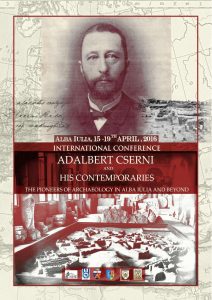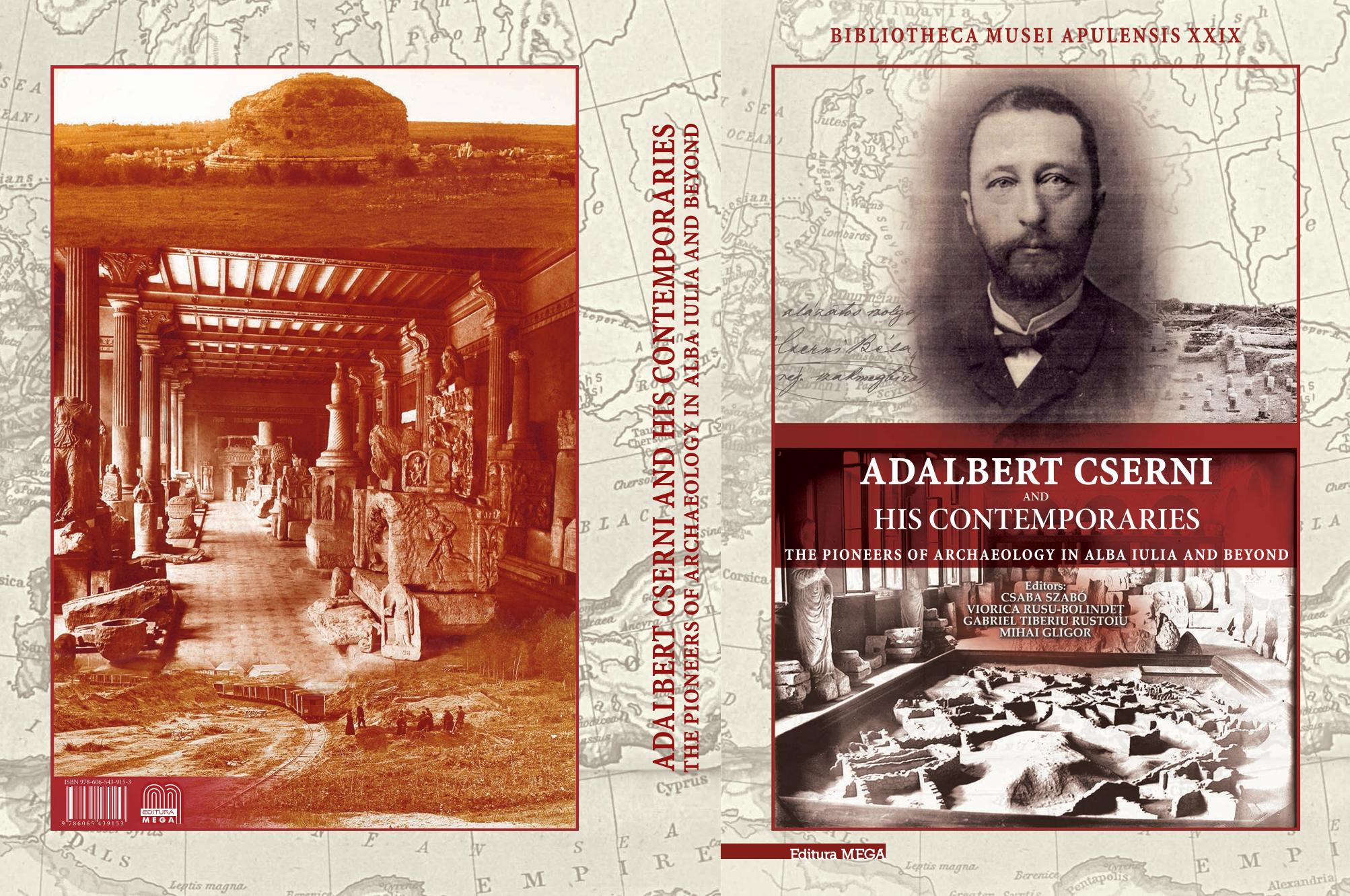International Conference Adalbert Cserni and his Contemporaries
The Pioneers of Archaeology in Alba Iulia and Beyond
Alba Iulia, 15–19th April 2016
| Museum History Conference in Gyulafehérvár | Múzeumtörténeti konferencia Gyulafehérváron | |
| Till recently, there were few studies focusing on the two-century-old history of Transylvanian archeology. Zoltán Vincze and prof. András Bodor, whose works from the last century were paradigmatic in the research of Transylvanian archeological history, left us with outstanding scientific research on this topic. The revival of archaeological history research over the past 1-2 decades has yielded a number of significant results in research on museum history and archaeological history. As a result, I started researching the rich, unpublished legacy of Béla Cserni in Gyulafehérvár (Alba Iulia) in 2014–2015, which resulted in the organisation of an international conference between 15-19 April 2016. The event was organised in collaboration with the Museum of Union from Alba Iulia, the National History Museum of Cluj-Napoca, as well as the University of Gyulafehérvár, marking the centenary since the death of Cserni. The event attracted researchers from numerous Central and Eastern European countries and analyzed the archeological history of the end of the 20th century in a regional perspective. The volume of the conference was published at the end of 2017. Sincet he first conference in Alba Iulia, two other events were organised, creating an academic network and itinerary conference focusing on history of archaeology and museology in Central-Eastern Europe. See also: Szabó Cs. et al., Adalbert Cserni and his contemporaries. Histories of archaeology in Alba Iulia and beyond, Editura Mega, Cluj-Napoca, 2017. |
Az erdélyi régészet közel két évszázados történetével kevesen foglalkoztak. Kiemelkedő tudományos kutatást hagyott ránk ebben a témában Vincze Zoltán történész, Bodor András ókortörténész, akiknek munkái paradigmatikusak voltak az erdélyi régészettörténet kutatásában. A múzeumok története, 19. századi hagyatéka, múzeumalapitók és régészek önálló biografikus kutatása mind a szakma adóságaként állt előttünk ezidáig. Az elmúlt 1-2 évtizedben felélénkülő régészettörténeti kutatások számos jelentős eredményt hoztak a múzeum-történet és régészettörténet témakörök kutatásában. Ennek hatására kezdtem el 2014–2015-ben kutatni Cserni Béla gyulafehérvári régész gazdag, több száz dokumentumot felölelő feldolgozatlan hagyatékát, melynek eredményeként 2016. április 15–19. között a gyulafehérvári Egyesülés Múzeuma és a Kolozsvári Történeti Múzeum, valamint a Gyulafehérvári Egyetem együttműködésével sikerült megszerveznem Erdély első, régészettörténeti konferenciáját Cserni Béla halálának centenáriumán. Az esemény számos Közép-Kelet európai országból vonzott előadókat és első alkalommal sikerült a 19. század végének régészettörténetét regionális perspektívában elemezni. A konferencia kötete 2017 végén jelent meg. A gyulafehérvári konferenciát követően immár két konferenciát sikerült megszervezni, amely a 2016-os kezdeményezés folytatásaként is értelmezhetőek. Lásd: Szabó Cs. et al., Adalbert Cserni and his contemporaries. Histories of archaeology in Alba Iulia and beyond, Editura Mega, Cluj-Napoca, 2017. |
|
| Béla Cserni (1842-1916) | Cserni Béla (1842-1916) | |
| Béla Cserni is the father of urban archeology in Transylvania, the leader of the first systematic research of Apulum, the Roman city under Gyulafehérvár, the founder of the city’s museum and the pioneer of Transylvanian archaeological photography. Cserni, who worked as a botanist and German language teacher, became a researcher of the antiquities of Apulum after 1888, and his work after that was devoted almost exclusively to the systematic exploration of the Roman city of Apulum. He discovered the praetorium consularis, Dacia’s governor’s palace, conducted rescue excavations in villas and buildings in the north-west corner of the colonia Aurelia Apulensis and the excavation of the Roman cemetery of Apulum. With Zsigmond Rainer, he founded the museum in Gyulafehérvár, which had one of the largest archaeological collections in Transylvania in its time.
Bibliography: Szabó Csaba, Béla Cserni and the beginnings of urban archaeology in Alba Iulia, Cluj-Napoca, Mega Publishing House, 2016. |
Cserni Béla az erdélyi magyar városi régészet atyja, a Gyulafehérvár alatti római város, Apulum első szisztematikus kutatásának vezetője, a város múzeumának alapítója és a régészeti fotográfia erdélyi meghonosítója. A botanikus és német nyelvtanárként tevékenykedő Cserni 1888-at követően Apulum régiségeit kutatta, munkássága ezt követően szinte kizárólag Apulum római városának szisztematikus feltárásával foglalkozott. Nevéhez kötődik többek között Dacia kormányzói palotájának feltárása, a colonia Aurelia Apulensis észak-nyugati sarkában található városi villák és épületek mentőásatása és a kutyamáli római temető feltárása is. Rainer Zsigmonddal ő alapította a gyulafehérvári múzeumot, amely a maga korában az egyik legnagyobb erdélyi régészeti gyűjteménnyel rendelkezett.
Bibliográfia: Szabó Csaba, Béla Cserni and the beginnings of urban archaeology in Alba Iulia, Cluj-Napoca, Mega Publishing House, 2016. |


